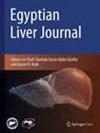Association between the severity of liver cirrhosis with quality of life and its impact on clinical practice
IF 0.7
Q4 GASTROENTEROLOGY & HEPATOLOGY
引用次数: 0
Abstract
Liver cirrhosis (LC) has a significant impact in quality of life, and it is frequently linked to loss of a job, mood fluctuations, anxiety, low self-esteem, and despair. Recent LC treatment primarily focuses on clinical manifestations rather than the patient’s quality of life. By analyzing quality of life, one can learn about the disease’s emotional, physical, and lifestyle effects. To find the relationship between quality of life with the severity of liver cirrhosis. The research was conducted as an observational study with cross-sectional data being collected. The study’s participants were recruited from Saiful Anwar Hospital’s outpatient and inpatient clinics. The individuals completed a chronic liver disease questionnaire to assess their quality of life, and the Child-Pugh score was used to determine the severity of their liver disease. The data was analyzed using Kruskal-Wallis and the rank Spearman test, with a significance level of 0.05. There were 54 individuals, with an average age of 53.71 years and a male-to-female ratio of 74%. The results showed that there was a significant difference between the Child-Pugh A, Child-Pugh B, and Child-Pugh C groups in all aspects of the chronic liver disease questionnaire (p = 0.000). The rank Spearman test revealed a substantial link between quality of life and liver cirrhosis severity (r: −0.817). The severity of LC is associated with the quality of life of the patients.肝硬化严重程度与生活质量的关系及其对临床实践的影响
肝硬化(LC)对生活质量有重大影响,它通常与失业、情绪波动、焦虑、自卑和绝望有关。最近的LC治疗主要关注临床表现,而不是患者的生活质量。通过分析生活质量,人们可以了解疾病对情绪、身体和生活方式的影响。目的探讨肝硬化严重程度与生活质量的关系。该研究是一项观察性研究,收集了横断面数据。该研究的参与者是从Saiful Anwar医院的门诊和住院诊所招募的。这些人完成了一份慢性肝病问卷,以评估他们的生活质量,并使用Child-Pugh评分来确定他们肝病的严重程度。数据分析采用Kruskal-Wallis检验和rank Spearman检验,显著性水平为0.05。共有54只,平均年龄53.71岁,男女比例为74%。结果显示Child-Pugh a组、Child-Pugh B组和Child-Pugh C组在慢性肝病问卷各方面均有显著性差异(p = 0.000)。rank Spearman检验显示生活质量与肝硬化严重程度之间存在实质性联系(r: - 0.817)。LC的严重程度与患者的生活质量有关。
本文章由计算机程序翻译,如有差异,请以英文原文为准。
求助全文
约1分钟内获得全文
求助全文

 求助内容:
求助内容: 应助结果提醒方式:
应助结果提醒方式:


